
Peak season arrives under intense cost pressure. Between mid-year back-to-school sales and holiday spikes, U.S. retailers now face fluctuating tariffs that threaten margins, operations, and inventory. Planning for seasonal demand is no longer sufficient. Retail supply chains must also account for policy-driven shocks that can emerge with little warning.
Since early 2025, the current administration has significantly widened the scope and scale of U.S. tariffs. A 10% baseline was imposed on most imports, while duties on Chinese goods were raised to approximately 30% after temporary spikes reached more than 125%. Steel and aluminum tariffs doubled from 25-50%. These actions have pushed average U.S. tariff rates to levels not seen since the 1930s.
The immediate effect is accelerated cost inflation for goods tied to global manufacturing. Prices for footwear and apparel have risen by approximately 14-15%. Even industries further down the supply chain have absorbed indirect impacts, as seen in packaging costs that influence pricing for food and consumer goods. A mid-2025 survey of U.S. companies found that 54% expected to raise prices if tariffs persist, forcing difficult tradeoffs between margin compression and passing costs along to consumers.
Understanding the risks
Tariff unpredictability creates profound operational uncertainty. Policy remains fluid, with tariff pauses ending abruptly and legal challenges still unresolved. Forecasting remains equally unstable, as tariff changes can instantly shift both landed costs and consumer behavior. While some companies with domestic or nearshore sourcing may avoid the worst of these effects, many remain exposed through global supplier networks.
The companies most at risk are those heavily dependent on international sourcing for categories directly affected by higher tariffs. Without meaningful adjustments to inventory management, supplier diversification, and pricing strategy, many risk either diminished profitability or inventory shortages that jeopardize sales performance during the most critical period of the year.
Diagnosing tariff exposure
Retailers approaching this peak season will need to reassess their entire operating model. That begins with a clear diagnosis of tariff exposure. Companies that understand the specific landed cost implications across their product portfolio can better anticipate where pressure on margins will emerge. This enables more deliberate decisions on whether to adjust product design, shift sourcing, or recalibrate pricing to maintain financial stability.
Diversification of sourcing is an increasingly important safeguard. As tariff exposure clusters around certain trade relationships, companies investing in broader supplier networks gain greater flexibility. Manufacturing capacity in regions such as Vietnam, India and Mexico is being expanded by many firms. Yet these shifts require time, resources and careful supplier qualification. Constraints on production capacity, regulatory compliance and geopolitical risk introduce new complexities. Successful diversification requires careful balancing of cost, quality, lead time and operational risk.
Implementing operational adaptations
The volatility of tariffs also forces a more dynamic approach to demand forecasting. Historical sales data provides limited guidance when tariff policy changes can influence prices and consumer buying patterns from one month to the next. Some consumers may advance purchases to avoid future price increases, while others may delay spending if they anticipate eventual relief. Retailers will require flexible forecasting frameworks that incorporate multiple scenarios, each modeling how different tariff outcomes might reshape purchasing behavior. Marketing calendars, promotional planning and inventory builds must all adapt accordingly.
Operationally, protecting margins becomes increasingly challenging. Tariffs impose direct costs on imported goods that companies must either absorb, offset through operational savings or recapture via pricing adjustments. Phased price increases may help minimize customer resistance, while renegotiating freight agreements, optimizing procurement costs and revisiting product design specifications can provide additional financial buffers. Communicating the rationale for price adjustments may also support customer retention as transparency has been shown to increase consumer acceptance of pricing changes driven by external factors.
All of these adaptations rely on organizational agility. Tariffs represent not only a financial exposure but a broader test of how quickly companies can adjust sourcing, pricing and inventory strategies in response to changing trade policies. Companies that build internal processes capable of evaluating policy changes in near real-time and translating those insights into operational decisions will have a significant advantage. This level of preparedness allows companies to preserve both inventory stability and financial resilience through periods of volatility.
Adapting quickly amid uncertainty
The uncertainty surrounding trade policy is unlikely to resolve before the peak season begins. While some negotiations remain ongoing, many tariffs remain firmly in place, and any reversals will likely occur too late to influence inventory already in transit. This leaves little margin for error. Retailers who wait for clarity may find themselves without sufficient flexibility to respond effectively.
Tariffs have evolved from abstract trade disputes into a direct operational risk embedded in every imported product. As retailers prepare for the 2025 peak season, success will depend on the depth of their supply chain mapping, the flexibility of their forecasting models, the diversification of their supplier networks and the precision of their margin management.
While the current environment is defined by uncertainty, it also offers an opportunity. Companies that adapt quickly and invest in resilience will not only navigate the challenges of this peak season but emerge with stronger, more agile operations capable of withstanding future shocks.



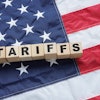

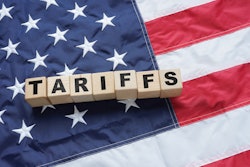
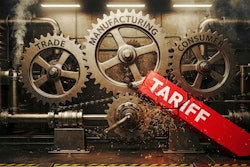
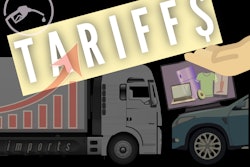
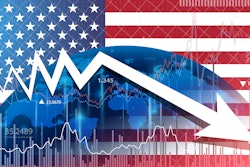


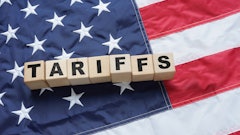


![Pros To Know 2026 [color]](https://img.sdcexec.com/mindful/acbm/workspaces/default/uploads/2025/08/prostoknow-2026-color.mduFvhpgMk.png?ar=16%3A9&auto=format%2Ccompress&bg=fff&fill-color=fff&fit=fill&h=135&q=70&w=240)



